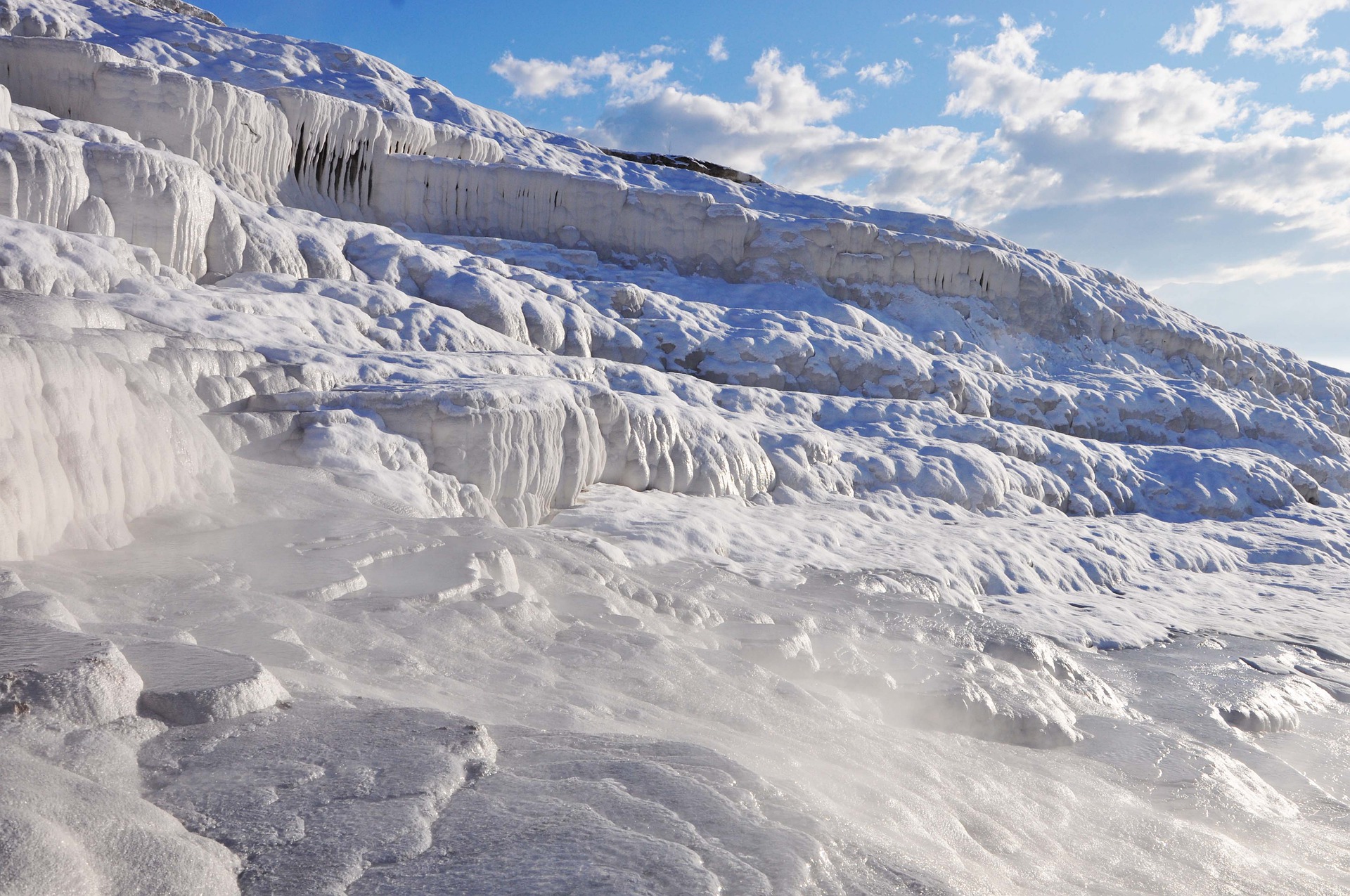Travertines are a kind of rock. They are rocks formed as a result of precipitation as a result of various chemical reactions. The formation of travertines in Pamukkale is caused by hot spring waters. These spring waters have been used since ancient times. It happens to the travertines with the canal before, and then it is poured in layers and mixes with the source again. Since travertines have a structure that solidifies over time, receiving too many visitors harms their texture.
How were Pamukkale Travertines Formed?
Travertines in Denizli, which fascinate those who see it, are one of the 18 places of special natural beauty that are included in Turkey's UNESCO World Heritage List. It is known that this natural wonder, also known as "White Paradise", has been providing spa service for about 1000 years.
The formation of travertines is due to thermal waters. There are approximately 17 hot water springs in the region with a temperature range of 33-100 degrees. After the thermal water comes out of its source, it reaches the region where the travertines are located. Spring water causes precipitation on the floors of travertines. After the abundant calcium hydrocarbonate in the water comes out of the source, it starts to dissolve by contacting with oxygen. During contact, carbon monoxide and carbon dioxide evaporate, while the remaining calcium carbonate precipitates and enters the form of rock over time.
